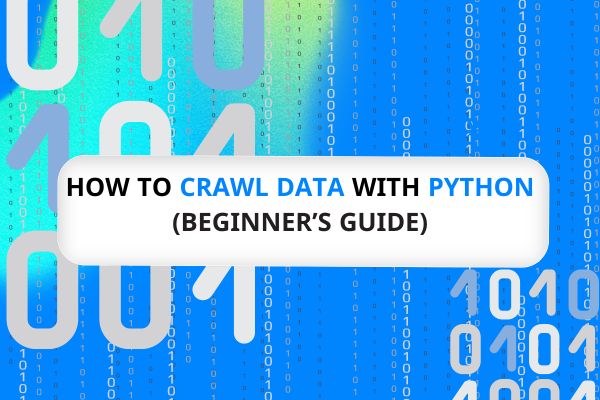
Understanding the Digital Data Landscape
In our interconnected digital world, data has become the most valuable currency. Every website, platform, and online service generates massive amounts of information waiting to be discovered, analyzed, and transformed into meaningful insights. Web scraping represents the key that unlocks these digital treasure troves, allowing curious professionals and researchers to extract valuable information efficiently and systematically.
Python has emerged as the premier language for web scraping, offering an elegant combination of simplicity and powerful libraries that make data extraction accessible to beginners while providing sophisticated tools for advanced practitioners. This comprehensive guide will walk you through everything you need to know about crawling websites and extracting data using Python.
The Evolution of Web Scraping
Web scraping has transformed dramatically over the past decade. What once required complex, custom-built scripts can now be accomplished with just a few lines of Python code. The democratization of data extraction technologies has opened unprecedented opportunities across industries, from market research and competitive intelligence to academic studies and business strategy.
Essential Python Libraries for Web Scraping
Requests: Your Gateway to Web Data
The requests library serves as the fundamental tool for making HTTP requests. It simplifies the process of fetching web content, handling different request types, and managing network interactions:
import requests
def fetch_webpage(url):
try:
response = requests.get(url, timeout=10)
response.raise_for_status()
return response.text
except requests.RequestException as error:
print(f"Network error occurred: {error}")
return NoneThis simple function demonstrates how easily you can retrieve webpage content, with built-in error handling to manage potential network issues.
BeautifulSoup: Parsing HTML with Elegance
BeautifulSoup transforms raw HTML into a navigable, searchable structure. Its intuitive interface allows you to extract specific elements with minimal complexity:
from bs4 import BeautifulSoup
def extract_article_titles(html_content):
soup = BeautifulSoup(html_content, ‘html.parser‘)
titles = soup.find_all(‘h2‘, class_=‘article-title‘)
return [title.text.strip() for title in titles]Selenium: Handling Dynamic Web Content
For websites relying heavily on JavaScript, Selenium provides a robust solution:
from selenium import webdriver
from selenium.webdriver.common.by import By
def scrape_dynamic_content(url):
driver = webdriver.Chrome()
driver.get(url)
# Wait for dynamic content to load
dynamic_elements = driver.find_elements(By.CLASS_NAME, ‘dynamic-content‘)
results = [element.text for element in dynamic_elements]
driver.quit()
return resultsAdvanced Scraping Strategies
Implementing Robust Error Handling
Successful web scraping requires anticipating and managing potential errors:
def resilient_scraper(urls, max_retries=3):
results = []
for url in urls:
attempts = 0
while attempts < max_retries:
try:
data = scrape_url(url)
results.append(data)
break
except Exception as error:
attempts += 1
if attempts == max_retries:
log_error(url, error)
return resultsEthical Considerations and Best Practices
Web scraping isn‘t just about technical execution—it‘s about responsible data collection. Always consider:
- Respecting
robots.txtguidelines - Implementing reasonable request rates
- Obtaining necessary permissions
- Protecting individual privacy
- Adhering to website terms of service
Real-World Application Scenarios
Market Research and Competitive Intelligence
Imagine tracking product prices across multiple e-commerce platforms. A well-designed Python scraper can:
- Monitor price fluctuations
- Compare product offerings
- Identify market trends
- Generate competitive insights
Academic and Scientific Research
Researchers leverage web scraping to:
- Collect large-scale datasets
- Track scientific publications
- Analyze social media trends
- Compile comprehensive literature reviews
Performance Optimization Techniques
Concurrent and Asynchronous Scraping
Modern web scraping demands efficiency. Utilize libraries like asyncio to manage multiple requests concurrently:
import asyncio
import aiohttp
async def fetch_url(session, url):
async with session.get(url) as response:
return await response.text()
async def scrape_multiple_urls(urls):
async with aiohttp.ClientSession() as session:
tasks = [fetch_url(session, url) for url in urls]
return await asyncio.gather(*tasks)Legal and Ethical Frameworks
Navigating the Complex Landscape of Data Extraction
Web scraping exists in a nuanced legal environment. Different jurisdictions have varying regulations regarding data collection. Always:
- Consult legal professionals
- Understand regional data protection laws
- Obtain explicit permissions when necessary
- Implement robust data anonymization techniques
Conclusion: Your Journey Begins
Web scraping with Python is more than a technical skill—it‘s a gateway to understanding our digital ecosystem. By mastering these techniques, you‘ll transform raw web data into actionable insights, driving innovation across industries.
Remember, great power comes with great responsibility. Approach web scraping with curiosity, respect, and a commitment to ethical data practices.
Happy scraping!










